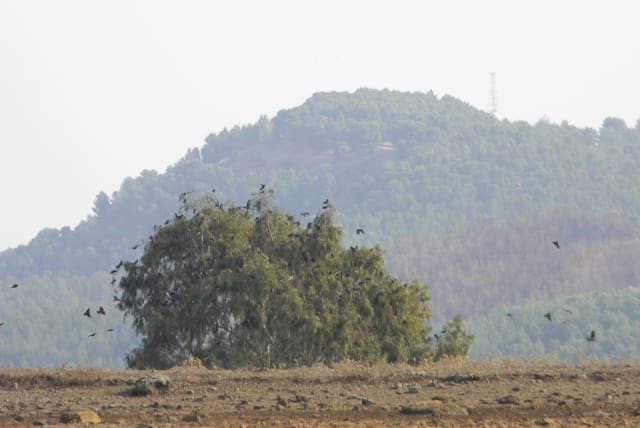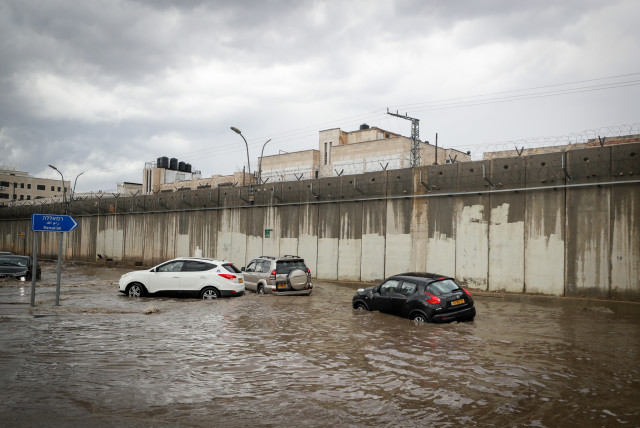Israel's Mount Canaan breaks 73-year rain intensity record amid storms

Rain intensity in the Mount Canaan region near Safed hit a 73-year record on Sunday. The most rain that fell in a 20-minute period was 22 mm, 28 mm in 30 minutes and 38 mm in an hour.
Israel experienced its inaugural winter storm of the year on Sunday morning, beginning at approximately 5 a.m. The rain intensity was so high in certain areas that it broke historical records, according to the Israel Meteorological Service.
Rain intensity in the Mount Canaan region near Safed hit a 73-year record on Sunday, according to the service. The most rain that fell in a 20-minute period was 22 mm, 28 mm in 30 minutes and 38 mm in an hour.
Rainfall intensity is calculated as the average rate of rainfall, measured in millimeters per hour or minute, corresponding to a defined duration of rain and a chosen frequency (or period, which here regarding the maximum, is the same as the duration).
In the Haifa district city of Harish, 31 mm of rain fell in a 20-minute period, 41 mm in 30 minutes, and 51 mm in an hour – the highest recorded rain intensity since 2009.
Intense rain in Israel 'supposed to happen once per century'
According to statistical calculations, rains this intense are only supposed to happen every 100 years. However, Amos Porat, head of climatic services at the Israel Meteorological Service, said the event could not be directly tied to climate change. He noted, however, that "the high intensities observed align with the trend of strengthening events with intense rainfall as part of climate change."
The service said that even in the coastal plain, there were solid rains and rain intensity, although no records were broken.
The rain began around 5 a.m. on the northern coastal plain, spreading throughout the morning to the center and inland areas of the country. By noon, it extended with intensity southward to the Ashdod line and inland to the Judean Mountains and north of the Jordan Rift Valley.
South of these areas, there were localized and shorter rain showers.
Around 4 p.m., rain accumulation ranged from 55 to 75 mm in the Upper Galilee, the northern Golan Heights, the Carmel region, and the Menashe Heights. In the central coastal plain, about 30 to 50 mm accumulated, while in the southern coastal plain, northern Negev, and the Binyamin region, there was 10 to 20 mm.
Thunderstorms and gusty winds accompanied the rains.
On Monday, rain is expected to continue to fall throughout the country—although, Porat said, it is expected to be less intense.
The Environment and Climate Change portal is produced in cooperation with the Goldman Sonnenfeldt School of Sustainability and Climate Change at Ben-Gurion University of the Negev. The Jerusalem Post maintains all editorial decisions related to the content.
Jerusalem Post Store
`; document.getElementById("linkPremium").innerHTML = cont; var divWithLink = document.getElementById("premium-link"); if (divWithLink !== null && divWithLink !== 'undefined') { divWithLink.style.border = "solid 1px #cb0f3e"; divWithLink.style.textAlign = "center"; divWithLink.style.marginBottom = "15px"; divWithLink.style.marginTop = "15px"; divWithLink.style.width = "100%"; divWithLink.style.backgroundColor = "#122952"; divWithLink.style.color = "#ffffff"; divWithLink.style.lineHeight = "1.5"; } } (function (v, i) { });

